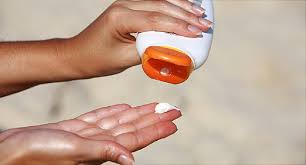
Breaking News
 GLOBAL EXCLUSIVE: Wittingly Or Unwittingly, Candace Owens Is Running A CIA-Style Psyop...
GLOBAL EXCLUSIVE: Wittingly Or Unwittingly, Candace Owens Is Running A CIA-Style Psyop...
 EXCLUSIVE: Investigative Journalist Nick Shirley Joins Alex Jones Live On-Air...
EXCLUSIVE: Investigative Journalist Nick Shirley Joins Alex Jones Live On-Air...
 Judge Orders Release of Secret Tyler Robinson Hearing in Charlie Kirk Assassination Case,...
Judge Orders Release of Secret Tyler Robinson Hearing in Charlie Kirk Assassination Case,...
 "Quality Learing Center" First Domino To Fall As Somali-Linked Minneapolis Daycare Scandal
"Quality Learing Center" First Domino To Fall As Somali-Linked Minneapolis Daycare Scandal
Top Tech News
 EngineAI T800: Born to Disrupt! #EngineAI #robotics #newtechnology #newproduct
EngineAI T800: Born to Disrupt! #EngineAI #robotics #newtechnology #newproduct
 This Silicon Anode Breakthrough Could Mark A Turning Point For EV Batteries [Update]
This Silicon Anode Breakthrough Could Mark A Turning Point For EV Batteries [Update]
 Travel gadget promises to dry and iron your clothes – totally hands-free
Travel gadget promises to dry and iron your clothes – totally hands-free
 Perfect Aircrete, Kitchen Ingredients.
Perfect Aircrete, Kitchen Ingredients.
 Futuristic pixel-raising display lets you feel what's onscreen
Futuristic pixel-raising display lets you feel what's onscreen
 Cutting-Edge Facility Generates Pure Water and Hydrogen Fuel from Seawater for Mere Pennies
Cutting-Edge Facility Generates Pure Water and Hydrogen Fuel from Seawater for Mere Pennies
 This tiny dev board is packed with features for ambitious makers
This tiny dev board is packed with features for ambitious makers
 Scientists Discover Gel to Regrow Tooth Enamel
Scientists Discover Gel to Regrow Tooth Enamel
 Vitamin C and Dandelion Root Killing Cancer Cells -- as Former CDC Director Calls for COVID-19...
Vitamin C and Dandelion Root Killing Cancer Cells -- as Former CDC Director Calls for COVID-19...
 Galactic Brain: US firm plans space-based data centers, power grid to challenge China
Galactic Brain: US firm plans space-based data centers, power grid to challenge China
Natural News reveals its top sunscreens to avoid in 2017

(Natural News) As summer approaches, the topic of sun protection inevitably comes up, with many news outlets publishing lists of top sunscreens. As many Natural News readers know, it's hard to trust the mainstream media and commercial products, where boosting the bottom line often trumps human safety. That's why we're bringing you a list of the top sunscreens to avoid this summer. These are not just some obscure products that you are unlikely to encounter in your local store; they are some of the same products that irresponsible publications are currently promoting.
Before we launch into our list, there is one point that cannot be overemphasized: Sunscreen should be a last resort. Sun is actually very good for you if you strike the right balance, and some experts believe that excessive sunscreen use is behind the worldwide vitamin D deficiency epidemic. Sunscreens with SPF 15 or higher reduce the body's vitamin D production by 99 percent, and a lack of vitamin D is behind health conditions like diabetes and some types of cancer. Light-skinned people need around 15 to 20 minutes of sun exposure across 60 percent of their body each day to get enough Vitamin D, while those with dark skin could use as much as 45 minutes of exposure each day.
Once you've gotten your dose of Vitamin D from sunlight, the best way to protect your skin from further exposure is by changing your diet. Having the proper nutritional balance makes your skin naturally more sun-resistant. You should focus on foods that are rich in antioxidants like berries and microalgae. Some people also take astaxanthin supplements.
Wearing clothing, hats and sunglasses and staying in the shade are all highly effective ways to protect your skin that don't involve slathering yourself in toxins. On those occasions where sunscreen is an absolute must – say, a long day at the beach under full sun – you'll want to use natural sunscreens with ingredients like non-nanotech zinc oxide, shea butter, or coconut oil.
Here is a list of sunscreens you should avoid this summer:
Banana Boat Kids Continuous Spray Sunscreen, SPF 100
Don't let the SPF of 100 fool you into thinking this is a superior product. The truth is that SPF values higher than 50 can offer a false sense of security. Moreover, Environmental Working Group (EWG) modeling found that it offers only moderate UVA protection and a rather poor balance between UVA protection compared to SPF.
The main concern with this product, however, is its active ingredient, the hormone-disrupting chemical oxybenzone, which has been linked to reproductive and developmental toxicity, organ system toxicity and allergies.
La Roche-Posay Anthelios 60 Melt-in Sunscreen Milk
This was one of the top-rated sunscreens in a recent Consumer Reports study and was touted on Today.com. Its high price tag might lead you to believe it's a superior product, but EWG gives it poor scores overall and calls it a "bad choice for sun protection". One of its active ingredients is the previously mentioned hormone disruptor oxybenzone, while ingredients triethanolamine and peg-8 laureate have also been linked to organ system toxicity, allergies and immunotoxicity.



